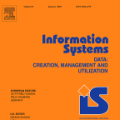Maps have played an important role in epidemiology and public health since the beginnings of these disciplines. With the advent of geographical information systems and advanced information visualization techniques, interactive maps have become essential tools for the analysis of geographical patterns of disease incidence and prevalence, as well as communication of public health knowledge, as dramatically illustrated by the proliferation of web-based maps and disease surveillance ``dashboards'' during the COVID-19 pandemic. While such interactive maps are usually effective in supporting static spatial analysis, support for spatial epidemiological visualization and modelling involving distributed and dynamic data sources, and support for analysis of temporal aspects of disease spread have proved more challenging. Combining these two aspects can be crucial in applications of interactive maps in epidemiology and public health work. In this paper, we discuss these issues in the context of support for disease surveillance in remote regions, including tools for distributed data collection, simulation and analysis, and enabling multidisciplinary collaboration.
翻译:自这些学科开始以来,这些地图在流行病学和公共卫生方面发挥了重要作用,随着地理信息系统和先进的信息直观化技术的出现,互动地图已成为分析疾病发病率和流行率的地理格局以及传播公共卫生知识的重要工具,在COVID-19大流行期间,网络地图和疾病监测“仪表板”的泛滥就是明证,虽然这些互动地图通常有效地支持静态空间分析,但事实证明,支持空间流行病学可视化和模拟,包括分布式和动态数据来源,以及支持分析疾病传播的时间方面,更具挑战性,将这两个方面结合起来,对于将交互式地图应用于流行病学和公共卫生工作可能至关重要,在本文件中,我们在支持偏远地区疾病监测的背景下讨论这些问题,包括分发数据收集、模拟和分析的工具,以及促成多学科合作。




